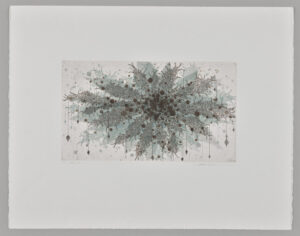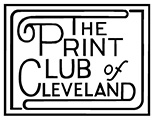 fern-gm-1, is the Print Club of Cleveland’s Publication No. 100 for the year 2022.
fern-gm-1, is the Print Club of Cleveland’s Publication No. 100 for the year 2022.
fern-gm-1, 2015. The Print Club of Cleveland Publication No. 100 for 2022.
Seiko Tachibana (Japanese, 1946-). Intaglio, etching, aquatint and spitbite on Rives BFK paper; final print, BAT, and 3 color proofs; platemark: 20.2 x 35.2 cm (7 15/16 x 13 7/8 in.); sheet: 49.7 x 66.2 cm (19 9/16 x 26 1/16 in.). The Cleveland Museum of Art, Gift of The Print Club of Cleveland 2022.429
